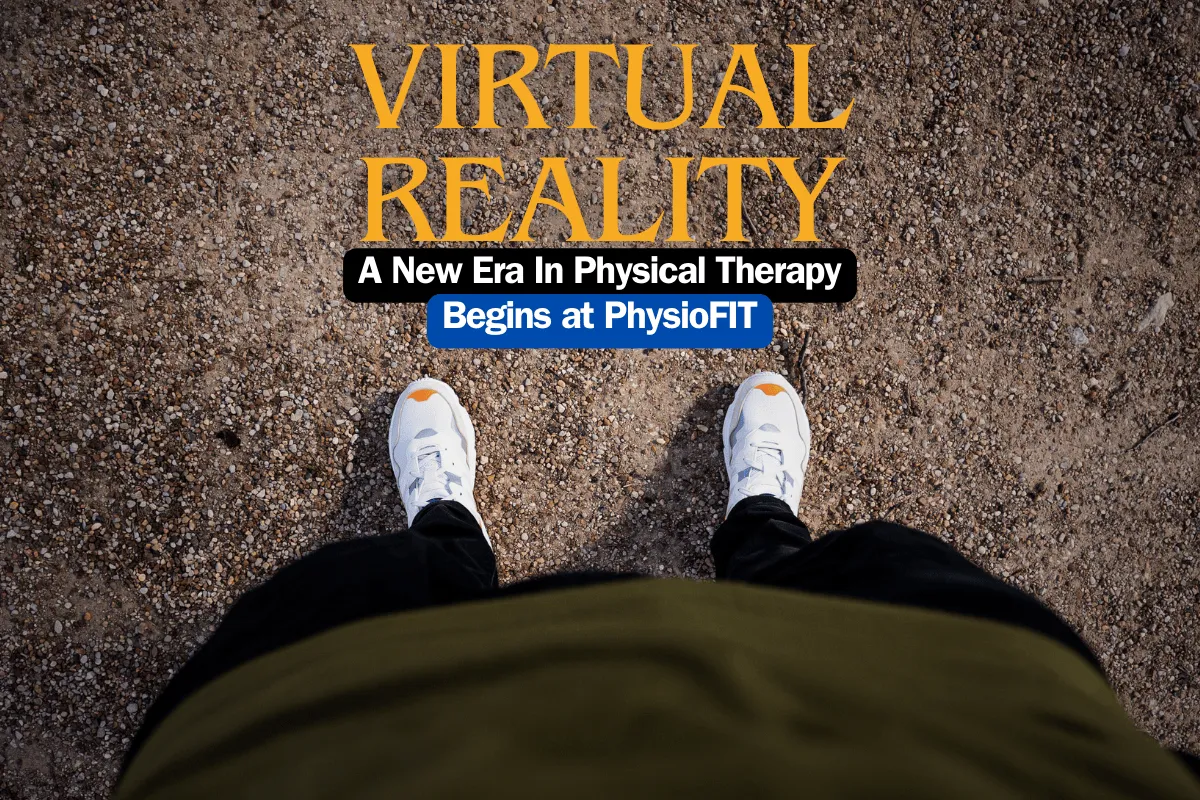Chronic Headache Relief
Free Your Mind From Chronic Headaches
Headaches are an occasional unwelcome guest for many of us, but when they become a frequent visitor, you may be dealing with chronic daily headaches. A broad term that includes various subtypes defined by their frequency and duration. These headaches can be significantly debilitating, but with assertive initial treatment and ongoing management, pain reduction and fewer headaches are achievable. If this strikes a chord with your experience, don't hesitate to schedule an appointment with us.
Discover Unprecedented Relief from Chronic Headaches at PhysioFit: We prioritize personalization in your healthcare journey, acknowledging that individuals with Chronic Headaches necessitate distinct treatment strategies. Utilizing the potency of empirically-supported, fitness-centric physical therapy in bend, we aim to do more than merely alleviate your symptoms. Our mission encompasses the enhancement of your holistic health, prevention of enduring pain, and speeding up your recuperation period, enabling a smooth transition back into your daily routines.
What You Should Know
Migraine headaches can be categorized into two types: episodic and chronic. While chronic migraines happen more than 15 days in a month, episodic ones occur less frequently.
The very medicine you're consuming for headache relief could potentially be causing headaches: Taking pain relievers beyond two days a week, even common ones such as ibuprofen, puts you at risk for what's known as a rebound headache. Similarly, abruptly discontinuing regular pain medication can provoke headaches.
The origin of your headaches may not necessarily be your head: Secondary headaches stem from an underlying health issue, like degenerative disc disease in the spine, sinus infections, or past experiences of head trauma. Although infrequent, persistent headaches and visual disturbances can also be caused by brain tumors.
A proper diagnosis of a TMJ or TMD problem involves a thorough evaluation from a professional.

What Causes Chronic Headaches?
The triggers of numerous chronic daily headaches remain somewhat elusive. Authentic (primary) chronic daily headaches don't present with a detectable root cause.
However, a series of conditions could instigate nonprimary chronic daily headaches, such as:
Vascular Issues: Any inflammation or complications with the blood vessels surrounding or within the brain, including serious events like a stroke, could trigger chronic daily headaches.
Infectious Diseases: Certain infections, notably meningitis, can also result in the manifestation of chronic daily headaches.
Intracranial Pressure Discrepancies: Abnormally high or low pressure within the skull could prompt these types of headaches.
Presence of a Brain Tumor: Brain tumors, whether malignant or benign, could be a potential cause of chronic daily headaches due to the pressure they exert on surrounding brain tissue.
Traumatic Brain Injury: Traumatic events causing injury to the brain can also be a catalyst for chronic daily headaches, as the brain recovers and copes with the trauma.
If any of this information resonates with your current situation, we urge you to schedule an appointment with us immediately. Don't let hip pain diminish your life quality - allow us to help you embark on the path to relief today.
Can Chronic Headaches Be Prevented?
The short answer is yes, chronic headaches can often be prevented, or at least their frequency and intensity can be significantly reduced. The following strategies focus on lifestyle changes and self-care measures which can help you manage and potentially prevent chronic headaches:
Identify Headache Triggers: Proactively documenting each headache in a journal can highlight patterns and triggers, thereby helping you to avoid these. Make sure to record important details like the time the headache started, what you were doing, and how long it lasted.
Cautious Medication Usage: Excessive consumption of headache medications, including over-the-counter ones, can increase the severity and frequency of headaches. It's advisable to consult your doctor for a safe plan to gradually reduce medication use, as abrupt discontinuation can lead to severe side effects.
Quality Sleep: For an average adult, 7-8 hours of sleep a night is essential. Try to maintain a consistent sleep schedule and seek medical advice if you have sleep disturbances, such as snoring.
Regular, Balanced Meals: Aim to eat healthy meals at consistent times daily. Be mindful of potential food and drink triggers like caffeine, and adjust your diet accordingly. Weight loss should be considered if obesity is a concern.
Regular Exercise: Engage in routine aerobic activities to improve your physical and mental well-being and reduce stress. Choose enjoyable activities like walking, swimming, or cycling, and remember to gradually increase the intensity to prevent injury.
Stress Management: Stress can often trigger chronic headaches. Incorporate stress-reducing techniques into your routine such as yoga, tai chi, and meditation. Moreover, staying organized, planning ahead, and maintaining a positive outlook can greatly help in managing stress.
Moderate Caffeine Intake: While caffeine is included in many headache medications due to its pain-alleviating properties, it can also exacerbate headaches. Try to reduce or completely remove caffeine from your diet.

Common Symptoms of Chronic Headaches
Chronic daily headaches, as the name implies, occur more than half the month, lasting for a period exceeding three months. Primary chronic daily headaches are those not precipitated by any underlying health condition.
These headaches can be of shorter or longer duration. Those falling in the long-lasting category persist for over four hours. The types of long-lasting chronic headaches encompass:
Persistent Migraines
Continuous Tension-Type Headache
Newly Appearing Daily Persistent Headache
Hemicrania Continua
Remember, if you resonate with any of the symptoms or conditions mentioned, we highly recommend making an appointment with us for a thorough evaluation and personalized treatment plan.
Please Note: The information provided on our website is intended for general education and is not a substitute for professional medical advice. Each individual's situation and body is different. Therefore, what may work for one person may not work for another. We care about your well-being and advise you to reach out to us to discuss your specific needs before implementing any advice from our website.
Your Source for All Things Physical Therapy in Bend Oregon
The PhysioBlog

PhysioFIT's VR Edge: Pioneering a New Era in Physical Therapy in Bend
Physical Therapy In Bend Oregon
Please Note: The information provided on our website is intended for general education and is not a substitute for professional medical advice. Each individual's situation and body are different. Therefore, what may work for one person may not work for another. We care about your well-being and advise you to reach out to us to discuss your specific needs before implementing any advice from our website. If you’d like to explore this more or would like to schedule a time with a physical therapist in Bend Oregon, contact us at PhysioFITBend.com
Introduction
In Bend, Oregon, a cutting-edge transformation is reshaping the field of physical therapy, led by the pioneering efforts of PhysioFIT. As the only clinic in the area harnessing the power of Virtual Reality (VR), PhysioFIT is redefining recovery and rehabilitation processes. This innovative approach perfectly aligns with Bend's dynamic, outdoor lifestyle, offering a unique blend of technology and therapeutic expertise.
By integrating VR into our practice, PhysioFIT stands at the forefront of modern physical therapy, providing a highly engaging, personalized treatment experience that is unmatched in the region. This progressive technique not only aligns with the active spirit of our community but also elevates patient care to new heights, setting PhysioFIT apart as a leader in innovative and effective rehabilitation solutions.
The Rise of VR in Physical Therapy: A Technological Leap
Virtual Reality in physical therapy is a groundbreaking advancement, reshaping our approach to rehabilitation and recovery. By integrating VR, our therapists at PhysioFIT are offering immersive, interactive treatments that elevate the patient experience far beyond traditional methods.
Benefits of VR in Physical Therapy:
Enhanced Engagement and Motivation: VR transforms repetitive, mundane exercises into engaging, interactive experiences. This heightened engagement motivates patients, encouraging regular participation and adherence to therapy programs. It helps focus your mind in ways it wouldn’t normally focus while doing most traditional therapies.
Improved Cognitive and Physical Outcomes: VR scenarios are not just visually stimulating but are also designed to improve cognitive functions and motor skills. This is particularly beneficial in neurological and pediatric conditions where conventional exercises might fall short in sustaining interest.
Real-time Feedback and Adaptability: One of the most significant advantages of VR is its ability to provide immediate feedback. This allows therapists to adapt rehabilitation programs in real-time, addressing the individual needs and progress of each patient. Our PT’s can see what you see while you’re wearing the VR goggles.
VR for Diverse Conditions:
Neurological Rehabilitation: VR plays a crucial role in the rehabilitation of neurological conditions. For patients recovering from a stroke, managing Parkinson's disease, or dealing with multiple sclerosis, VR aids in enhancing balance, coordination, and fine motor skills. The immersive nature of VR helps in retraining the brain, fostering neuroplasticity.
Orthopedic Recovery: In the realm of orthopedic rehabilitation, VR is a game-changer. Whether it's post-surgical rehabilitation or managing chronic pain, VR offers innovative exercises that enhance strength, flexibility, and mobility. It's particularly effective in addressing conditions like ankle sprains, knee surgery recovery, and shoulder pain.
Pediatric Therapy: For children, VR turns physical therapy into a fun, engaging activity. Conditions like cerebral palsy, autism, and developmental delays require a specialized approach, and VR's playful, interactive nature holds their attention, making therapy sessions more effective.
Innovations and Research: The Scientific Backing
The efficacy of VR in physical therapy is backed by growing research. Studies consistently demonstrate improvements in balance, coordination, strength, and overall mobility among patients using VR, as opposed to traditional rehabilitation methods. These findings are crucial in cementing VR's role as a safe, effective, and innovative tool in physical therapy. With the new addition of Virtual Reality into the clinic, PhysioFIT is “leading the pack” among physical therapists in Bend.
Expanding the Scope: VR in Various Therapeutic Settings
Vestibular Rehabilitation: VR is proving to be invaluable in vestibular rehab, especially in conditions causing vertigo and balance issues. Custom VR scenarios challenge the vestibular system, aiding in faster recovery.
Chronic Pain Management: For chronic pain sufferers, VR provides a unique form of distraction therapy, helping in pain management and improving quality of life.
Sports Rehabilitation: Athletes in Bend can benefit from VR, especially for injury prevention and performance enhancement. VR simulations can mimic sport-specific movements, aiding in targeted rehabilitation.
Conclusion
Virtual Reality in physical therapy, as championed by PhysioFIT, represents much more than a technological leap; it marks a significant paradigm shift in patient care and rehabilitation methodologies. In the lively and active community of Bend, Oregon, PhysioFIT is leading the way with VR, not just as a tool but as a transformative pathway in the rehabilitation experience. This technology dovetails with the community's ethos of active living, providing an avenue for accelerated recovery and substantial improvement in overall quality of life for those undergoing therapy.
At PhysioFIT, the implementation of VR transcends traditional therapy boundaries, offering a holistic approach that addresses both physical and mental well-being. This innovative platform ensures that recovery encompasses not just regaining strength or mobility, but re-engaging with life in a meaningful and enjoyable manner. For our PhysioFIT patients, this means a rehabilitation experience that is both effective and empowering, fostering a sense of achievement and progress with every session.
Moreover, PhysioFIT's adoption of VR in our practice underscores our commitment to embracing advanced technology to deliver the highest standard of healthcare. It reflects our dedication to providing innovative treatment options, grounded in scientific research and ensuring safety, reliability, and effectiveness.
By integrating virtual reality physical therapy (VR physical therapy) at PhysioFIT, we're not just setting a new benchmark in patient care; we're enhancing lives. In doing so, we are not only promising a brighter, healthier future for our patients but also opening up a world of possibilities, free from the constraints of physical limitations. For the Bend community and beyond, PhysioFIT's introduction of VR in physical therapy is a stride towards a future where cutting-edge technology and expert human care converge to create transformative, immersive, and deeply impactful healing experiences.
FAQ
Q: What makes VR different from traditional physical therapy methods?
A: Unlike traditional methods, VR offers an immersive, interactive experience that can be tailored to each patient's specific needs, providing a more engaging and potentially faster rehabilitation process.
Q: Can VR physical therapy be used at home?
A: Yes, with the right equipment and guidance from a therapist, VR physical therapy can be adapted for home use, allowing for greater flexibility and convenience in treatment.
Q: How does VR impact mental health during physical therapy?
A: VR has been shown to positively influence mental health by reducing anxiety and improving mood, which can be particularly beneficial in the holistic recovery process.
Please Note: It's important to note that any exercises or techniques that are shared should be performed under the guidance of a qualified bend physical therapy expert to ensure correct technique and to prevent injuries. A physical therapist can provide a customized exercise program based on the individual's fitness level, goals, and any existing injuries or conditions. If you’d like to explore this more or would like to schedule a time with a physical therapist in Bend Oregon, contact us atPhysioFITBend.com
Copyright PhysioFIT 2023 . All rights reserved


